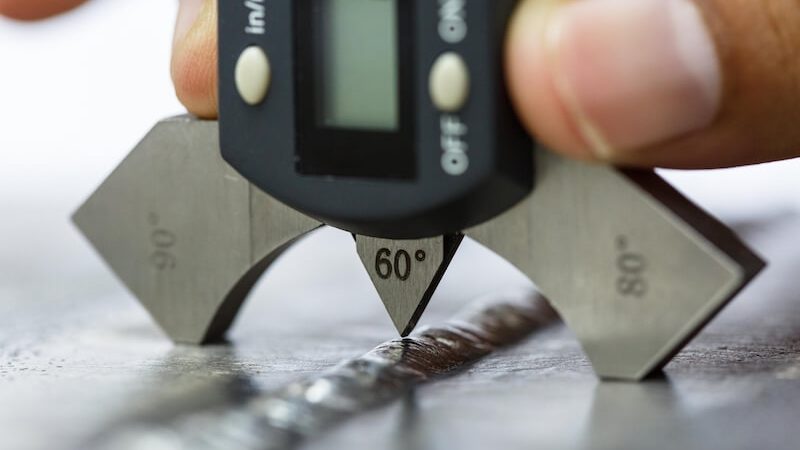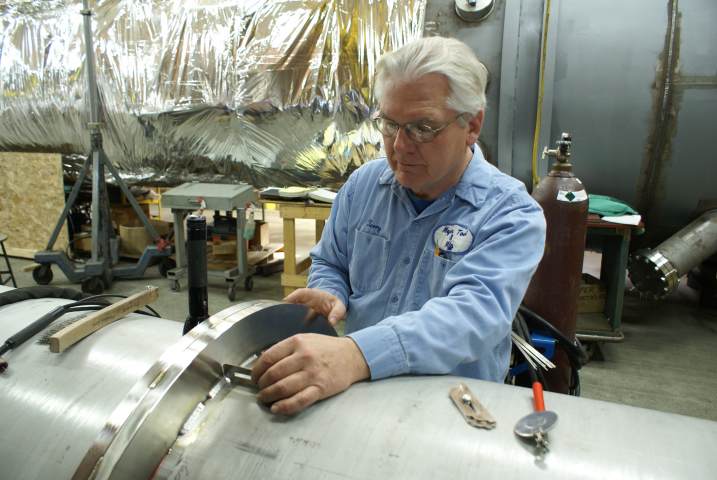Licensed Houston Welding Inspection Professionals for High-Quality Assessments
Licensed Houston Welding Inspection Professionals for High-Quality Assessments
Blog Article
Checking Out the Basics of Welding Evaluation: A Comprehensive Examination of Processes, Tools, and the Relevance of Quality Assurance in Welding Industries
Welding evaluation offers as a foundation in the upkeep of safety and security and architectural stability throughout different sectors. Comprehending the effects of these practices elevates vital concerns concerning their efficiency and the future direction of quality guarantee in welding.
Relevance of Welding Evaluation
Welding evaluation plays an important role in making certain the honesty and safety and security of bonded frameworks. It functions as a methodical strategy to reviewing weld quality, identifying prospective issues, and making sure compliance with established requirements and requirements. The importance of welding examination extends beyond simple adherence to regulations; it is crucial in protecting human lives and safeguarding investments in infrastructure.
Faulty welds can lead to disastrous failures, leading to substantial economic losses, injury, or loss of life. Strenuous inspection procedures are essential to identify issues such as poor infiltration, porosity, or fractures prior to they rise right into critical failings. Additionally, efficient welding evaluation adds to the total efficiency and durability of frameworks, making certain that they can endure the conditions for which they were created.
Moreover, the implementation of welding inspection promotes a society of quality and liability within the welding industry. By focusing on assessment, organizations demonstrate their commitment to quality, consequently improving their reputation and competition in the marketplace. Eventually, welding examination is not merely a step-by-step step yet a basic part of design integrity and security guarantee, crucial for the effective execution of welding tasks throughout various markets.
Secret Inspection Processes
A detailed method to welding inspection entails numerous vital processes that are essential for making sure weld quality and architectural honesty. The initial vital process is visual assessment, which allows assessors to determine surface defects such as fractures, porosity, and incorrect bead appearance. This approach offers as an initial examination to guarantee that the weld meets defined standards.

In addition, damaging testing might be performed on sample welds to examine their mechanical residential or commercial properties and performance under stress. This procedure involves tiredness, tensile, and impact screening to confirm that the weld can stand up to functional problems.
Last but not least, documentation and coverage are important parts of the examination procedure. Maintaining accurate records of inspections, monitorings, and test results helps ensure compliance with industry requirements and facilitates regular renovation in welding methods. Collectively, these key procedures form the foundation of efficient welding assessment and quality control.
Tools for Weld Assessment
Countless tools are vital for reliable weld examination, each designed to assess different elements of weld top quality and performance. Among one of the most extensively used are aesthetic examination tools, consisting of magnifying glasses and borescopes, which allow inspectors to identify surface area problems such as cracks, porosity, and incorrect combination.
In addition, ultrasonic screening (UT) devices is critical for identifying inner problems. This device uses high-frequency acoustic waves to reveal suspensions within the weld, making certain the honesty of the material. Radiographic screening (RT) tools, which use X-rays or gamma rays, in a similar way like this offer understanding into the interior structure of welds, enabling for the identification of inclusions or voids.
For exact measurements, calipers and assesses play a significant function in establishing weld dimensions and making sure adherence to specified tolerances. Solidity testers examine the mechanical residential properties of the weld, guaranteeing it meets efficiency requirements.

Strategies for Assessing Quality
Just how can the quality of welds be reliably evaluated? A range of techniques are utilized to examine weld stability and make certain adherence to specified requirements.
Ultrasonic screening (UT) is an additional noticeable method that uses high-frequency sound waves to discover internal defects within the weld. Houston Welding Inspection. This method offers a detailed view of the weld's stability without compromising its architectural integrity. On top of that, radiographic testing (RT) employs X-rays or gamma rays to reveal interior issues, using comprehensive insights right into weld high quality
Magnetic bit screening (MT) is efficient for discovering surface and near-surface gaps in ferromagnetic Find Out More materials, making use of electromagnetic fields and colored particles to highlight problems. Lastly, color penetrant testing (PT) can be used to discover surface-breaking flaws by using a dye that seeps into splits and is ultimately exposed.
Compliance With Sector Criteria
Compliance with market requirements is essential for making sure the high quality and safety of welded frameworks. These criteria, established by companies such as the American Welding Culture (AWS) and the American National Requirement Institute (ANSI), give standards that govern the welding procedure, materials, and assessment protocols. Complying with these standards not only ensures the structural stability of welds however likewise reduces dangers related to failures that might result in catastrophic consequences.

Welding assessors are tasked with confirming conformity with these requirements throughout the welding process (Houston Welding Inspection). This includes examining welding procedures, keeping an eye on welder qualifications, and performing extensive evaluations of the final item. Non-compliance can result in significant monetary consequences, project hold-ups, and damage to a firm's online reputation
Normal training and updates on standards are necessary to keep personnel notified and competent, making sure that all facets of welding procedures satisfy or surpass governing needs. Inevitably, commitment to market requirements offers as a structure for excellence in the welding industry, promoting safety and security and integrity in welded structures.

Final Thought
In final thought, welding evaluation serves as an important part in maintaining the safety and security and stability of bonded frameworks. Adherence to sector criteria makes sure conformity and promotes a society of top quality within the welding sector.
Additionally, the execution of welding assessment fosters a culture of quality and responsibility within the welding industry. Ultimately, welding assessment is not simply a procedural step however an essential component of design stability and safety assurance, crucial for the successful implementation of welding jobs across various sectors.
A detailed approach to welding examination entails a number of crucial procedures that are crucial for making sure weld quality and architectural integrity. These requirements, established by companies such as the American Welding Society (AWS) and the American National Criteria Institute (ANSI), offer guidelines that regulate the welding process, Web Site products, and assessment methods.Welding assessors are tasked with verifying conformity with these criteria throughout the welding procedure.
Report this page